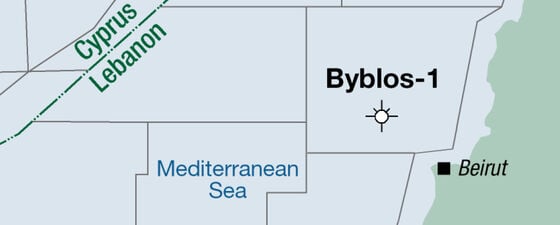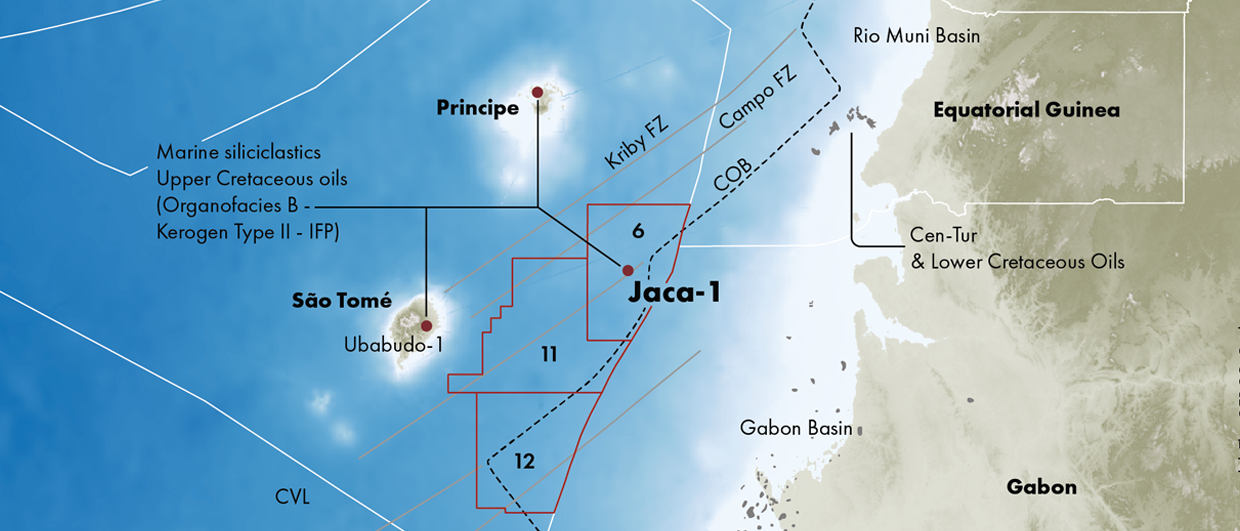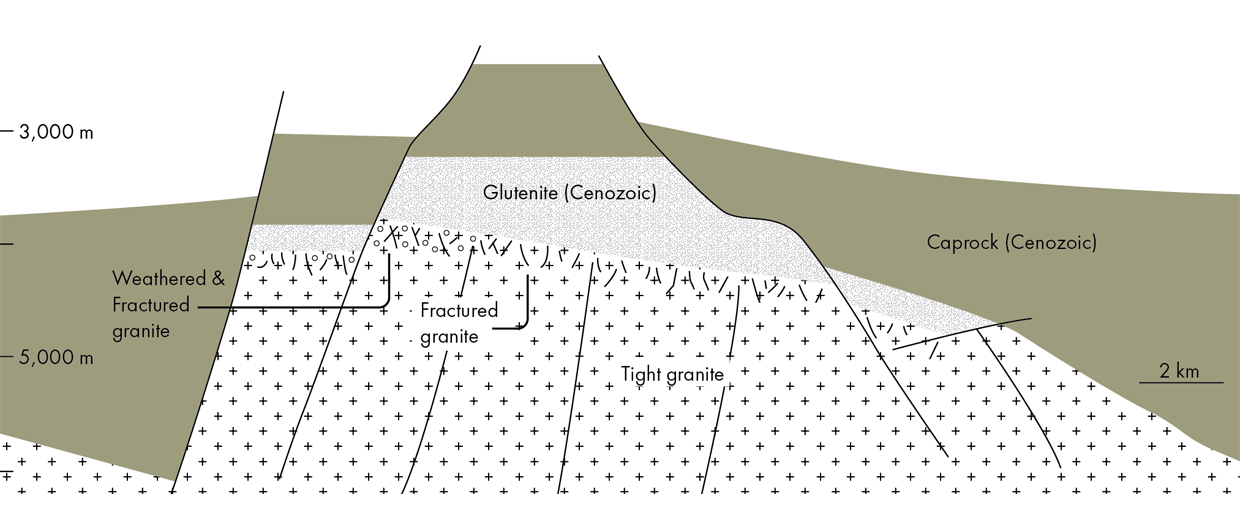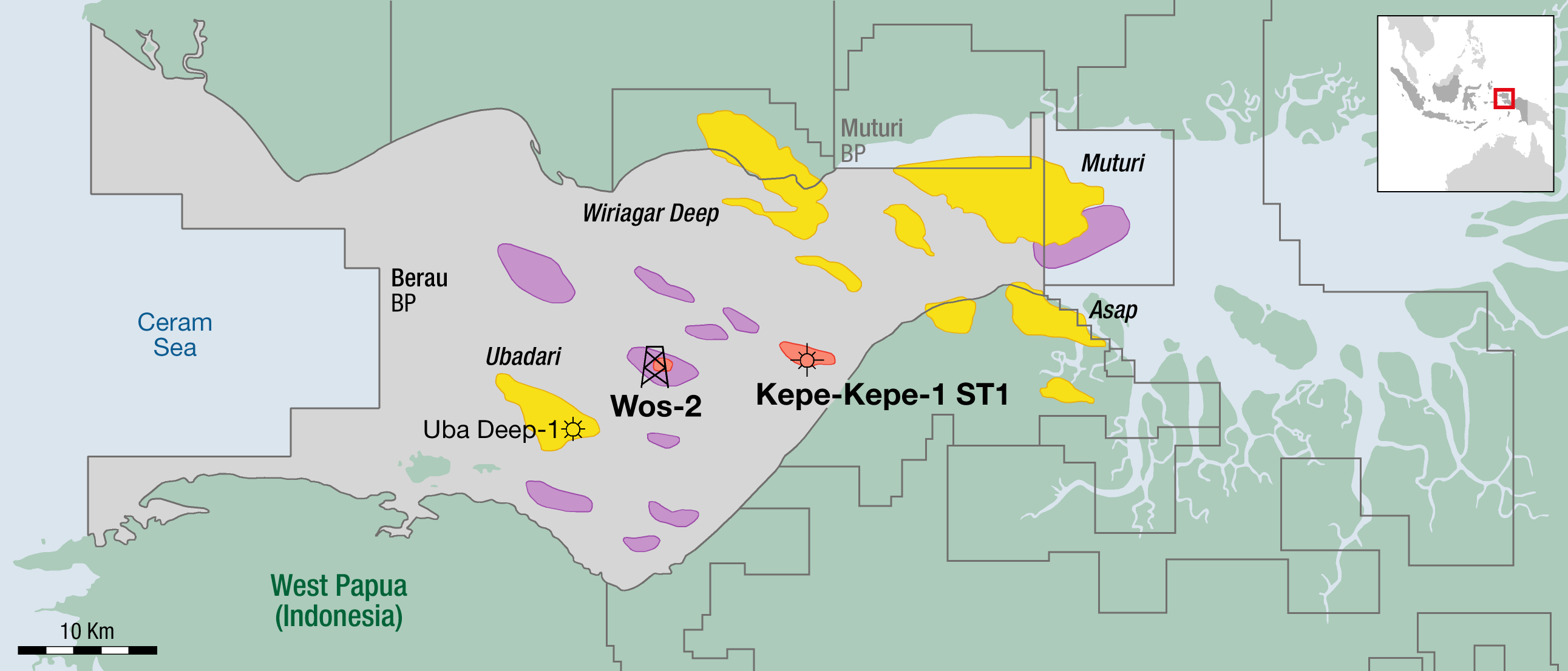Despite earlier rumours of a gas find, Lebanon’s first offshore well Byblos-1 did not encounter the predicted Tamar sandstone reservoir formation.
Location of the failed Byblos-1 well offshore Lebanon.
Byblos-1, the first well offshore Lebanon, is a failure despite earlier rumours of a gas find. Gas shows were encountered in the Oligo-Miocene but the main objective Tamar sandstone, the reservoir for the Israeli fields to the south, was absent. This sand is believed to have been derived from the proto-Nile delta to the south, so may not have been transported this far north.
Total, with partners Eni and Novatek, spudded Byblos-1 in Block 4 on 27 February 2020. It targeted the highly successful Levantine Basin Tertiary gas play being developed to the south in Israel and to the west in Cyprus. This play consists of locally continuous turbidite fans forming high quality Lower Miocene reservoirs (>25% porosity, even at depths of 5 km). Traps are structural, commonly large, faulted 3-way dip closures. Interbedded flooding surface shales seal gross columns over 100m high vertically and across the faults. Whether the proposed second well, on Block 9, will go ahead as planned in 3Q 2020, or be delayed due to this result compounded by Covid-19 crewing problems, remains to be seen.
Further Reading on Hydrocarbon Exploration in Lebanon
Will Lebanon be the Next Hydrocarbon Exploration Hotspot?
Wissam Chbat (Board Member, Head of Geology and Geophysics Department at the LPA), Wael Khatib (Geologist) and Jad Abi Khalil (Geologist)
Despite prolific hydrocarbon indicators, offshore Lebanon is the last place to be explored in the Eastern Mediterranean. With a new round opening, will Lebanon be the next exploration hotspot?
This article appeared in January, 2019
Extraordinary Hydrocarbon Potential Offshore Lebanon
Neil Hodgson, Karyna Rodriquez and Paolo Esestime; Spectrum Geo
Unlocking the extraordinary hydrocarbon potential of the Eastern Mediterranean, offshore Lebanon, with Spectrum’s reprocessed broadband seismic data of the Levant Basin.
This article appeared in Vol. 15, No. 5 – 2018
Lebanon. The New Levantine Exploration Opportunity
M. Soledad Velasco, Ph.D.
Lebanon lies at the centre of known regional hydrocarbon systems, but it is poorly explored and understood, possibly due to topographic challenges to terrestrial geophysical acquisition. A recently acquired suite of airborne geophysical measurements complemented by sub-surface regional resistivity data aims to remedy this situation.
This article appeared in Vol. 12, No. 6 – 2016





